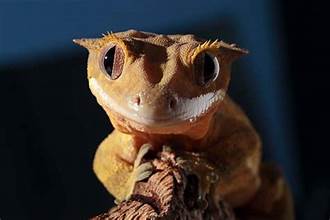Crested geckos have captivated pet enthusiasts with their unique appearance and docile nature. One of the most intriguing aspects of these reptiles is their ability to regenerate their tails. This process, known as autotomy, is a defense mechanism that allows them to escape predators by shedding their tails. We will dive into the details of crested gecko tail regeneration, including the process, benefits, and considerations for pet owners.
The Tail Regeneration Process
When a crested gecko feels threatened, it can contract muscles at the base of its tail, causing it to break off. This process, known as autotomy, is a fascinating defense mechanism. It’s relatively painless for the gecko, and a new tail will begin to grow in its place. The autotomy process involves the contraction of specific muscles, forming a broken plane, and sealing blood vessels to prevent excessive bleeding. The regenerated tail is not identical to the original, as it lacks bone structure and is often shorter and stouter.
Caring for a Gecko with a Lost Tail
If your crested gecko has lost its tail, it’s essential to provide appropriate care:
- Maintain a Clean Environment:
Keep the gecko’s enclosure clean and debris-free to prevent infections.
- Offer a Nutritious Diet:
Give your gecko a balanced diet to support the regeneration process. This responsibility is crucial for pet owners to ensure their gecko’s well-being.

- Monitor for Signs of Stress:
Watch for signs of stress or discomfort, as these can hinder regeneration.
- Consult a Veterinarian:
If you have concerns about your gecko’s tail regeneration or notice any unusual symptoms, consult a veterinarian specializing in reptile care.
Benefits of Tail Regeneration
- Survival Advantage:
Tail regeneration provides crested geckos with a significant survival advantage. By shedding their tails, they can distract predators and escape potential danger, a reassuring fact for pet owners.
- Energy Conservation:
Regenerating a tail requires a significant amount of energy. However, the benefits of survival often outweigh the costs.
- Regenerative Capabilities:
Reptiles’ ability to regenerate body parts is a remarkable feat of biology and highlights their incredible adaptability.
Potential Complications
While tail regeneration is a remarkable process, it can sometimes lead to complications:
- Infection:
If the wound left by the lost tail is not kept clean, it can become infected.
- Regeneration Failure:
In some cases, the gecko may be unable to regenerate a new tail.
- Deformities:
The regenerated tail may be deformed or have other abnormalities.
Considerations for Pet Owners
If you own a crested gecko, it’s essential to understand the implications of tail regeneration.
- Avoid Tail Injury:
While crested geckos can regenerate their tails, it is best to avoid unnecessary injuries. Handle your gecko gently and provide a safe environment.
- Monitor Regeneration:
Monitor your gecko’s healing process. Make sure that the wound is clean and free of infection.
- Nutritional Needs:
Tail regeneration requires additional nutrients. Always provide your gecko with a balanced diet that includes insects, fruits, and vegetables.
- Stress Management:
Excessive stress can hinder the regeneration process. Make a calm and comfortable environment for your gecko.
Final Thoughts
Crested gecko tail regeneration is a fascinating example of nature’s ability to adapt. Understanding this process can help you provide the best care for their reptiles. Providing a safe, healthy, and stress-free environment supports your crested gecko’s natural ability to heal and thrive.




